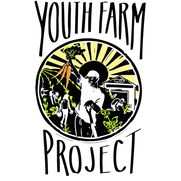 As soon as I finished my last tests as an undergraduate on around 5/12, I got right to work prepping the fields. Due to farmer Ann’s bad back, it was necessary that Katie and I learn how to drive the tractor and begin to absorb the techniques behind using each tractor implement. We used the moldboard plow in the upper two fields on the barn side of the road, which had been left fallow for a year. The moldboard plow buries vegetation on the surface by inverting the soil to about 6-12” deep. Although the moldboard plow is a powerful tool, it deals serious damage to the soil structure, soil organic matter, and life in the soil by completely flipping the first 6-12” of topsoil upside down. After the moldboard plowing the two up fields, we used a disk harrow to create an even soil surface, which was followed by the use of a spiketooth tine harrow for further evening the soil surface and most importantly bringing up weed roots, mainly quack grass, to the surface to dry up and die. For the first time, we were able to use the chisel plow in the lower field on the barn side of the road instead of the moldboard plow because of good cover crop management in the lower field. In 2012, we planted two successive oat and pea cover crops, one in the spring and one in the fall. The fall cover crop winterkilled leaving a nice layer of pea and oat mulch on the soil surface and few weeds to deal with. The chisel plow disturbs the soil to a similar depth as the moldboard, but doesn’t invert the surface soil. Ann and I are excited about reducing tillage at the Youth Farm to improve soil health year by year! Each year, before the eight-week summer program begins in July, the Youth Farm Project depends on hundreds of volunteer hours to prep the fields, shape the beds, set up irrigation, seed trays, direct seed and transplant two to three acres. Simon, Natalia, Zac, Catherine, Max, Anna, Amy, Raffi, Alice, Leah, Marie, Thea, Emily, Amanda, Amelia, Serena, LACS classes, and a Waldorf summer camp all came through to miraculously get everything in the ground on time. In addition, this year we also had the help of four high school students who were employed through the YES program to work through the Fall-Winter-Spring on Saturdays from 9am-1pm and Mondays and Tuesdays from 4pm-6pm after school (See Rayna’s awesome blog post for more detail). I feel so fortunate to be a part of the amazing community that exists around the Youth Farm Project and that has allowed YFP to continue into its fourth growing season! |
Archives
August 2022
Categories |
The Youth Farm Project | 24 Nelson Road, Ithaca, NY 14850 | [email protected]

 RSS Feed
RSS Feed